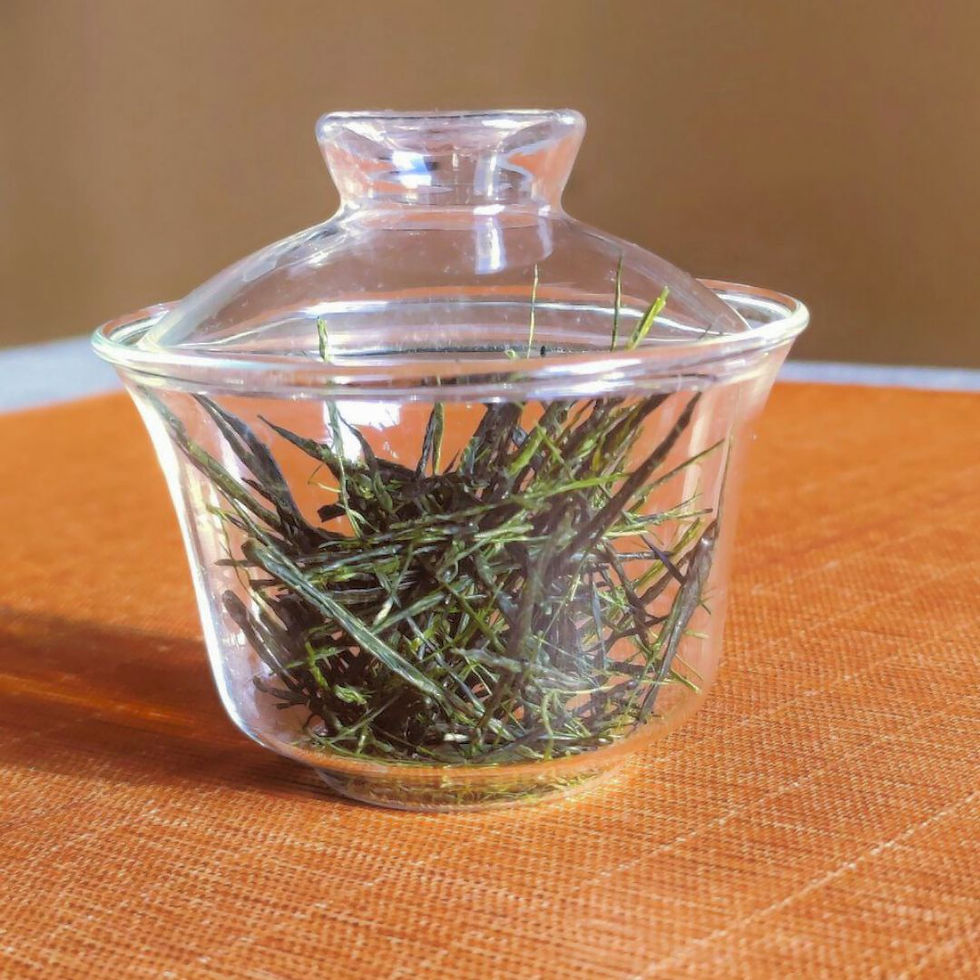
Water + Leaves = Tea?
- Ilya Averyanov

- Apr 4, 2024
- 3 min read
Updated: Jun 22, 2024

There are different ways to prepare the same teas, depending on the region and time period. In this article, we are focusing on one of the most popular methods of brewing tea in China: using short brewing times and a higher proportion of tea leaves to water for making several steeps. This method is derived from the gongfu cha traditions seen in Fujian, Guangdong, Hong Kong and Taiwan, and have originated in the Chaoshan region of the Guangdong province.
Gōngfū chá 功夫茶 can be translated as "making tea with skill and dedication." It stands for using our senses, knowledge, and experience to prepare the tea in the best way to appreciate its qualities. Appreciating tea goes beyond simply tasting the tea. It involves observing, analyzing, and enjoying all aspects of the tea, such as taste, aroma, smell, texture, the impact on our bodies, the visual characteristics of the leaves and the tea soup, and more.
In my experience, the best to begin with is to learn how to simply make tea that tastes good. Once you start loving the taste, you'll naturally begin to explore the other nuances of tea. So, for now, let's simply focus on making tea that tastes good.
The first step to that is understanding the interaction between the water and the tea leaves. On the most basic level, the water extracts different compounds from the tea leaves, creating the drink. By manipulating the temperature of the water and the amount of time it interacts with the leaves, we can influence the extraction process, thus changing the taste, texture, and aroma of the drink.
Eyeballing the weight of the tea leaves
So, you want to add 5 grams of tea to your teapot but don't have a scale to measure the tea you have. Worry not, for we have prepared some visual references for you to understand what 5g of different tea types look like. With time, you'll easily measure the perfect amount of leaves for your vessel with your eyes and taste buds alone.
Water temperature & steeping times
Here are two cheat tables for steeping the most common Chinese and Taiwanese tea types for you to use. The first table is the easy version, aimed at simple guidelines. The second table has a bit more nuance and is more fun to play with.
Please note, that these tables assume the tea-to-water proportion of 5g to 100ml, and are based on my personal preferences. Since we specialize in Taiwanese teas, you may find that these tables work better with Taiwanese teas than with their Mainland cousins, especially oolong and black tea. We will talk about pu'er, heicha, and aged tea in later articles.
Easy cheat sheet
More nuance
There are some patterns you might have noticed in the table. Why does the second steep tend to be shorter than the first? Why do teas with higher oxidation, roasting, or age tend to yield more steeps than the others?
It's in the leaves
The shape of the leaf, as well as its cultivar, processing style, oxidation, roasting, and aging all have an impact on what methods of brewing suit it best. As a rule of thumb, higher oxidation, stronger roasting, and longer aging process all require higher temperatures to help the leaves release their flavor. With that in mind, it'll be easier for you to know what to do the next time you encounter an unfamiliar tea.
Final thoughts
Each tea, even within the same category, is unique. As is the person drinking it. That's why every tea drinker develops their own style of brewing and adjusts the variables according to their preferences. Experimenting with the leaf-to-water proportion, the water temperature, and steeping times is just the beginning, but it's a solid foundation to begin your tea journey. In the next articles, we will examine some of the vessels and tools used to brew tea, as well as the impact of their shape and material on the taste of the tea, thus adding more variables to play with to further deepen your relationship with the craft.













